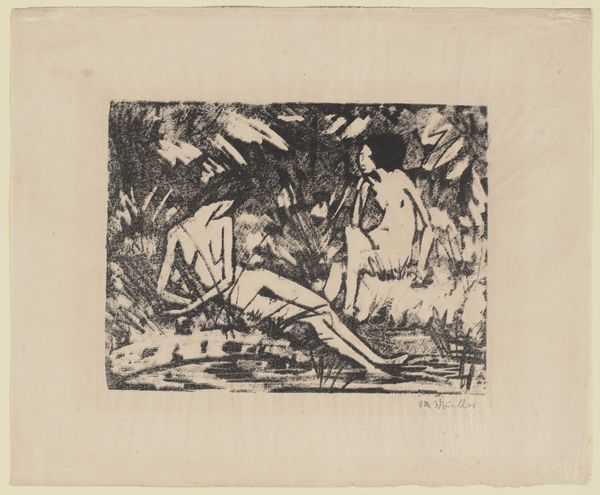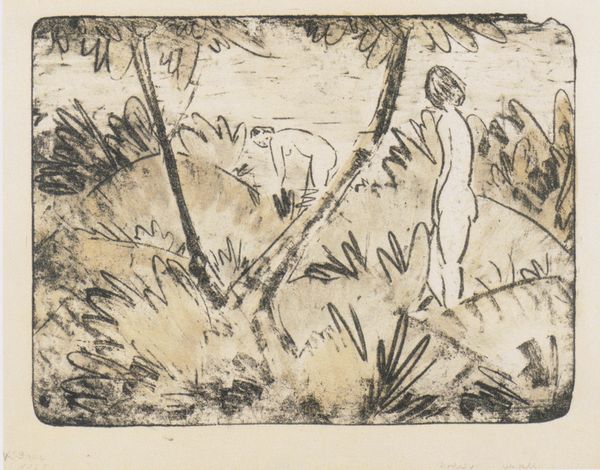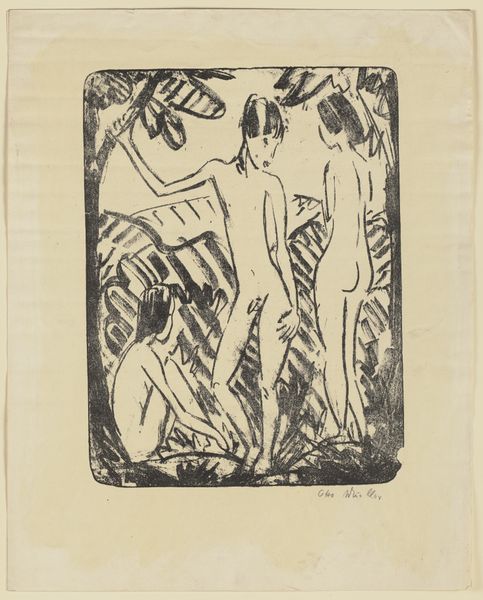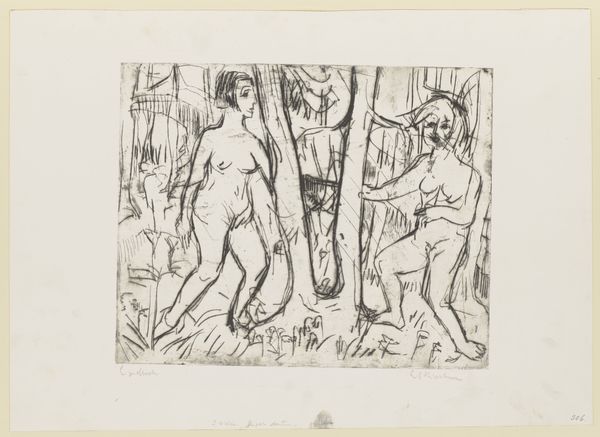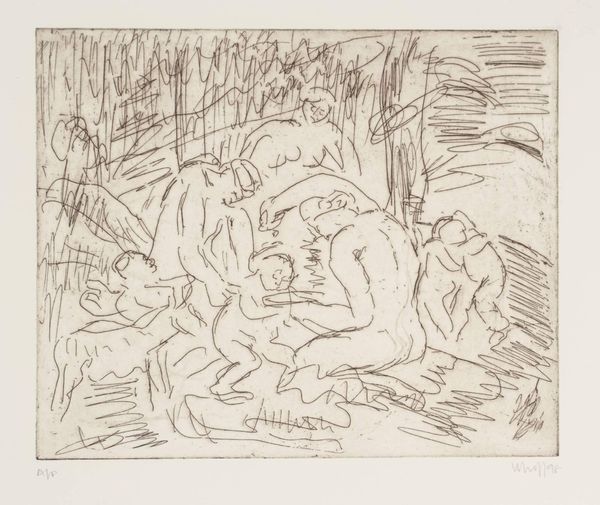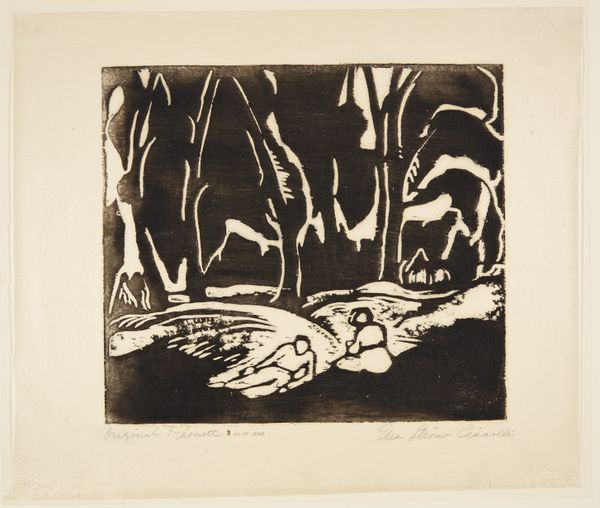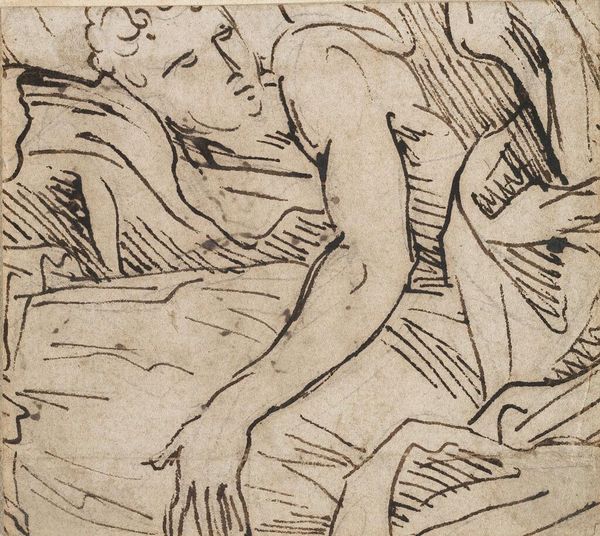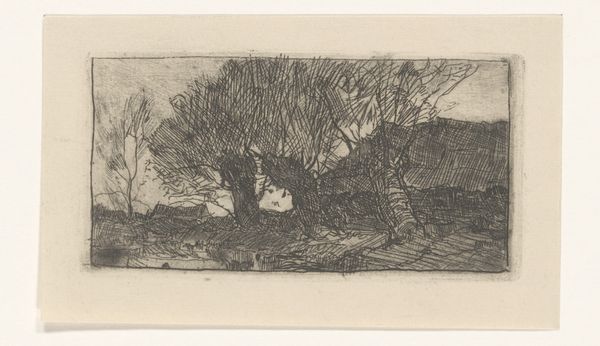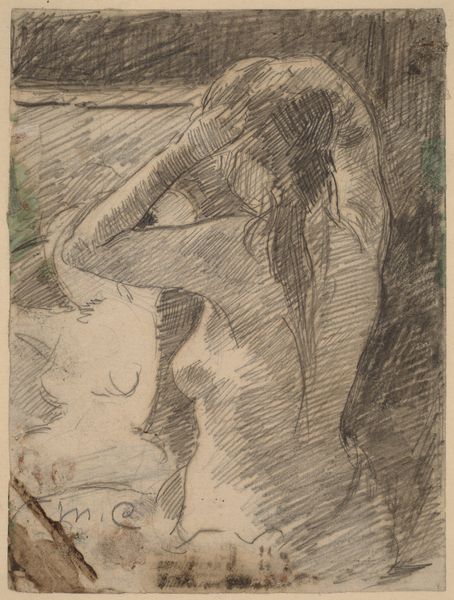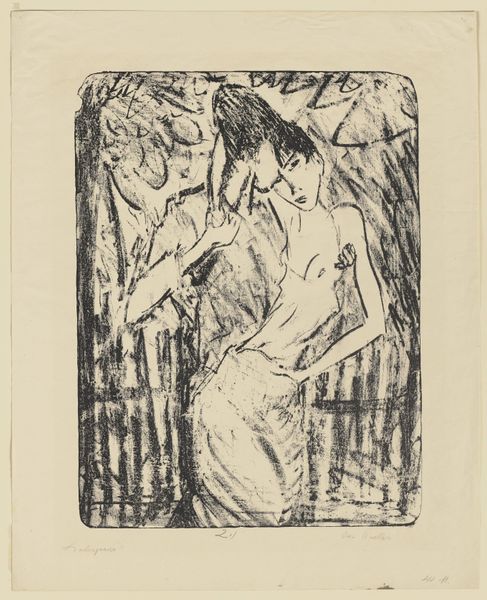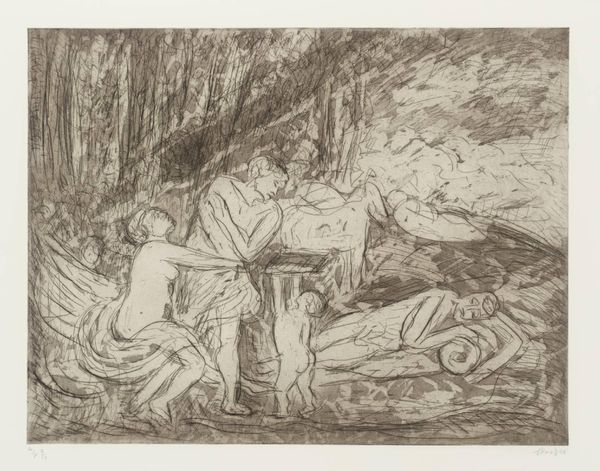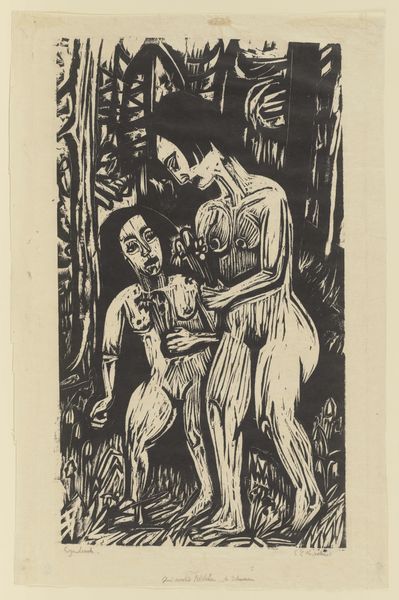
drawing, lithography, lithograph, print, ink
#
drawing
#
lithography
#
ink drawing
#
lithograph
# print
#
pen sketch
#
landscape
#
german-expressionism
#
figuration
#
ink
#
expressionism
#
nude
Copyright: Public Domain
Curator: Before us, we have Otto Mueller's lithograph, "Drei Mädchen im Wald," dating back to around 1912. It resides here at the Städel Museum. Editor: It strikes me as deliberately rough, almost unfinished. The stark black ink creates sharp contrasts. Is that characteristic of Mueller’s print work? Curator: Indeed. Observe how Mueller exploits the lithographic process for expressive purposes. The forms are simplified, almost primitive. The hatching and layering create depth and shadow, a clear move away from representational accuracy. Editor: The motif of the nude bathing women in a landscape goes back centuries. Here though, they feel untamed, existing in harmony with nature without that undercurrent of voyeurism often present in similar imagery. What might those female figures signify within the context of early 20th-century anxieties and social mores? Curator: The nudes within expressionism often symbolized a yearning for an unspoiled state, an escape from industrialization. But observe the interplay of line and mass—how the verticality of the trees echoes the figures, integrating them within the pictorial structure. It's more than just theme, it’s formal dialogue. The work is dominated by vertical orientations with horizontal interruptions. Editor: Certainly. Those jagged, assertive strokes feel almost aggressive. One wonders if Mueller isn't hinting at the disruption – the angst of the pre-war period – through these visual distortions. It makes me think of the German back-to-nature movements, or the search for psychological truth found in early Expressionist prints. Curator: Interesting. This symbolic connection to German Romanticism cannot be discarded, no. The rhythmic distribution of tones across the pictorial plane creates both stability and dynamism. A semiotician would note the careful control over a limited set of signs. Editor: Ultimately, it invites viewers to consider their own relationship with the natural world. What expectations and assumptions are challenged by this bold, unapologetic aesthetic statement? Curator: Indeed, whether as a formal construction, or an invitation to decode symbolism, "Drei Mädchen im Wald" continues to pose significant questions for both art historians and cultural critics. Editor: I agree. Its enduring relevance lies in its capacity to simultaneously provoke aesthetic contemplation and critical reflection on our evolving cultural values.
Comments
No comments
Be the first to comment and join the conversation on the ultimate creative platform.
